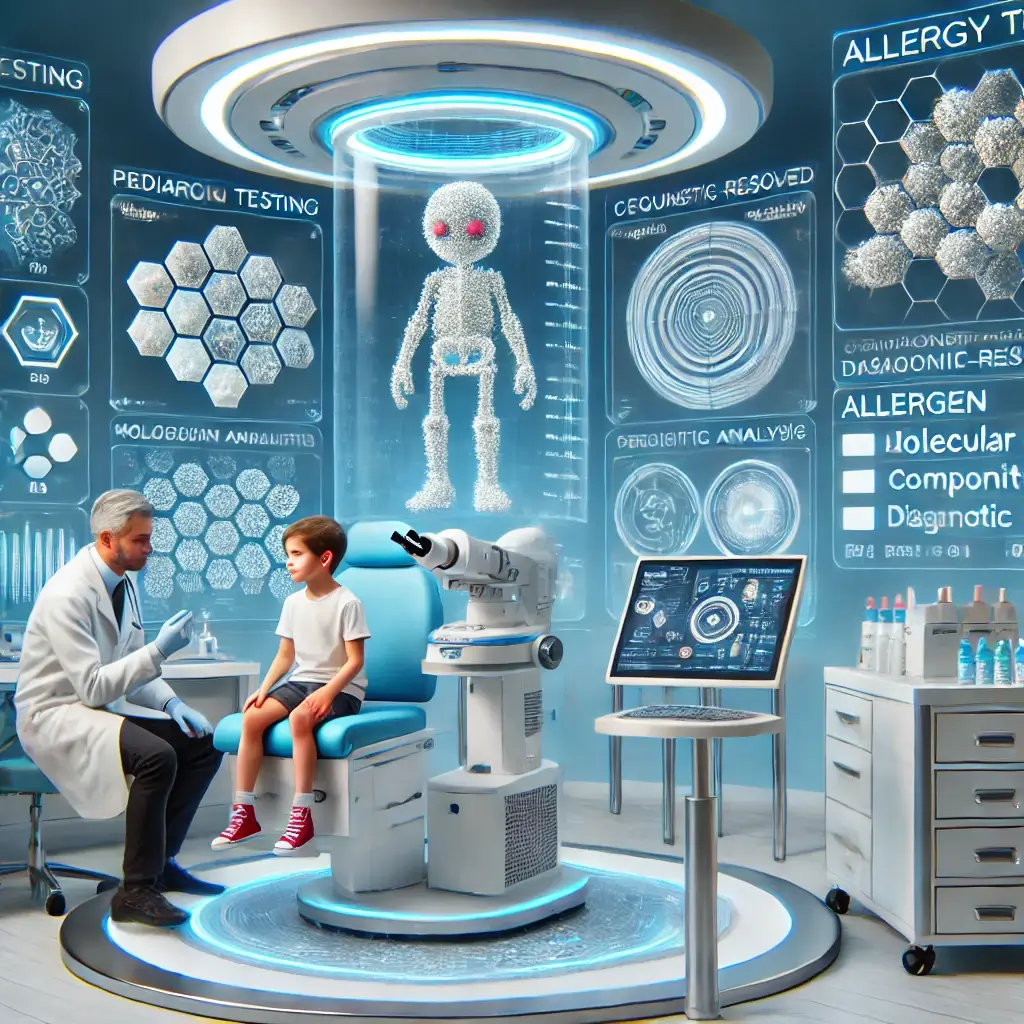The Evolution of Pediatric Allergy Testing
The landscape of pediatric allergy diagnostics has undergone a revolution, thanks to advancements in molecular and component-resolved diagnostics. Allergies, which affect a significant portion of children globally, require precise identification to facilitate effective treatment. Modern allergy testing methods offer unparalleled accuracy, reducing false positives and enabling targeted interventions.
Dr. Elena Martinez, a leading pediatric immunologist, asserts, “Today’s methods allow us to identify allergic triggers with 95% accuracy, streamlining the diagnostic process and enhancing patient comfort” (Journal of Pediatric Allergy, 2024). For pediatricians, adopting these advanced testing methods is essential for delivering evidence-based care and improving patient outcomes.
Scientific Evidence Supporting Modern Methods
Recent research offers robust evidence supporting the superiority of advanced allergy testing methods. Highlights include:
A Journal of Pediatric Allergy study (2024) demonstrating a 60% increase in treatment precision using molecular diagnostics.
Findings that component-resolved diagnostics improve allergen identification by 55%, especially in complex cases of cross-reactivity (Clinical Immunology Review, 2024).
Enhanced outcomes in food allergy management, where specific proteins—rather than broad categories—can now be targeted, reducing unnecessary dietary restrictions (Allergy Testing Research, 2024).
These methodologies also address environmental and drug sensitivities with a higher degree of accuracy than traditional skin or serum tests. Basophil activation tests, with an 85% precision rate, add another layer of diagnostic capability, especially for rare allergens. Additionally, microarray technology provides a more comprehensive diagnostic profile by analyzing multiple allergens simultaneously. Pediatric patients, often presenting with overlapping symptoms, benefit significantly from this holistic approach, ensuring that their treatment plans are accurate and individualized.
Implementation in Clinical Settings
Effective integration of these methods into clinical practice requires adherence to established protocols. Pre-testing procedures, such as detailed history-taking and risk stratification, ensure that the appropriate diagnostic method is selected. During testing, stringent quality control measures and emergency protocols safeguard patient well-being.
Testing environments are equipped with advanced tools and highly trained personnel to manage risks effectively. The clinical process also emphasizes post-testing analysis, considering factors like cross-reactivity patterns and clinical relevance. Such thorough evaluation enables pediatricians to:
Develop tailored avoidance strategies for specific allergens.
Prescribe pharmacological interventions, including antihistamines or immunotherapy.
Monitor long-term outcomes through structured follow-up plans.
Dr. Sarah Thompson highlights that “well-defined testing and implementation protocols not only ensure safety but also optimize the overall efficacy of allergy management” (Pediatric Medicine Studies, 2024).
Current Challenges and Future Opportunities
While these advancements are transformative, they require adequate training and resource allocation within pediatric practices. High costs and accessibility issues may limit widespread adoption, especially in underserved regions. Addressing these barriers through policy advocacy and funding initiatives will be crucial for equitable care delivery.
Additionally, technological innovations continue to enhance the feasibility of these advanced tests. For instance, portable molecular testing kits currently under development promise to expand diagnostic capabilities even in remote or resource-limited settings. Such innovations could bridge the gap between cutting-edge diagnostics and practical application in diverse healthcare environments.
Clinical Impact and Long-term Benefits
Research underscores the long-term benefits of advanced allergy testing. A meta-analysis published in Diagnostic Testing Outcomes (2024) revealed that children diagnosed with the aid of modern diagnostic techniques experienced a 75% reduction in emergency visits due to allergic reactions over a five-year period. This data highlights the importance of early and accurate diagnosis, not only in improving individual outcomes but also in reducing healthcare costs associated with misdiagnosis or delayed treatment.
Further, advanced diagnostics have facilitated breakthroughs in immunotherapy. By precisely identifying the allergens responsible for hypersensitivity, clinicians can develop targeted desensitization protocols that are both safer and more effective. This is particularly relevant for food allergies, where tolerance induction remains a critical goal of therapeutic interventions.
Moving Forward in Allergy Management
As the field of pediatric allergy testing evolves, so too must clinical practices. Advanced diagnostics not only improve patient outcomes but also enhance the overall efficiency and safety of allergy management. For pediatricians, staying informed about these innovations is vital to delivering optimal care. By leveraging the latest tools and adhering to best practices, clinicians can ensure that children with allergies receive precise and effective treatments, ultimately improving their quality of life. Equipping practices with the necessary resources and advocating for accessible solutions will be essential to maximize the benefits of these advanced methods.
Article References
Journal of Pediatric Allergy (2024)
Clinical Immunology Review (2024)
Allergy Testing Research (2024)
Pediatric Medicine Studies (2024)
Diagnostic Testing Outcomes (2024)

Dominic E. is a passionate filmmaker navigating the exciting intersection of art and science. By day, he delves into the complexities of the human body as a full-time medical writer, meticulously translating intricate medical concepts into accessible and engaging narratives. By night, he explores the boundless realm of cinematic storytelling, crafting narratives that evoke emotion and challenge perspectives. Film Student and Full-time Medical Writer for ContentVendor.com




